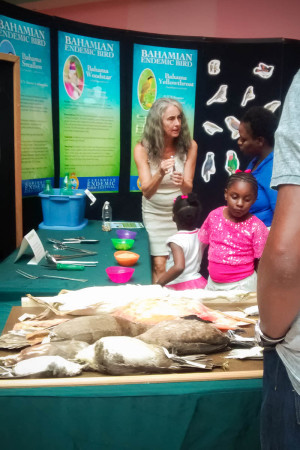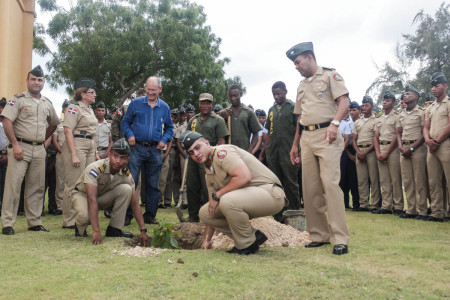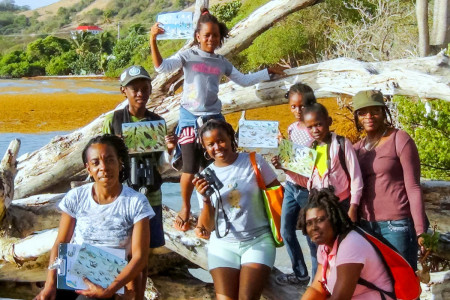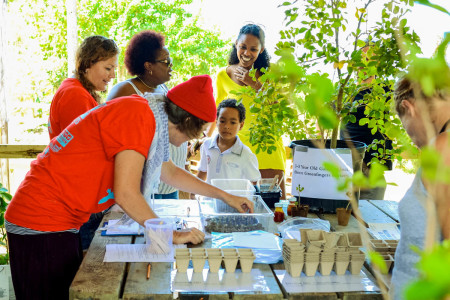
This year, the theme of “Restore Habitat, Restore Birds” inspired new activities and direct action to restore habitat on many islands. In St. Martin, over 100 seedlings of the native, but endangered, lignum vitae tree were distributed as part of a heritage tree habitat restoration project. At many events, attendees learned about the special relationships between endemic birds and native plants and trees.
BirdsCaribbean, the largest organization devoted to wildlife conservation in the Caribbean, spearheads the annual festival. Local organizations and coordinators (on each island) create events that reflect their unique birds and culture, finding new ways to engage their communities. In The Bahamas, 1,200 people were reached in a single day by a pop-up bird education station in a shopping mall. On Antigua, a movie about birds—complete with popcorn—was a big success with primary school students. On the islands of St. Vincent and the Grenadines, persons participated in bird monitoring, a photo competition, school presentations, an art competition, bird spelling bee competition, guided bird walks with schools, face paintings and much more!
“Over thousands of years birds have created – literally spread and planted – the forested lands that Caribbean people have benefited from,” explains Leo Douglas, President of BirdsCaribbean. “Now it is time not only to recognize birds as forest builders but to save these unique island species. It is we, the people, who must focus on restoring forests, wetlands, and other habitats for the benefit of human communities. Everyone of us needs wood, potable water, breathable air, medicines and other products that natural habitats provide.” Douglas further notes that the best habitats for Caribbean birds are also those that provide the highest quality water and fish nurseries, among other goods and services essential to Caribbean life.

“Highlighting habitat restoration has made this year’s festival particularly effective,” said Sheylda Díaz-Méndez, Regional Coordinator of the CEBF. “Throughout the region, individuals have realized that preserving and restoring natural heritage is critical to the health and prosperity of their communities and a real part of their cultural identity. We tapped into a movement that is growing rapidly.”
After a wildly successful 2015 festival, there are undoubtedly at least a few new bird enthusiasts out on the trail with binoculars in hand. Surely many people will look up and see a familiar bird in a new light, knowing it is unique to their island. Local coordinators will compare notes on which activities were most popular, and hopefully take a well-deserved break. Then the planning will begin for next year’s festival.


